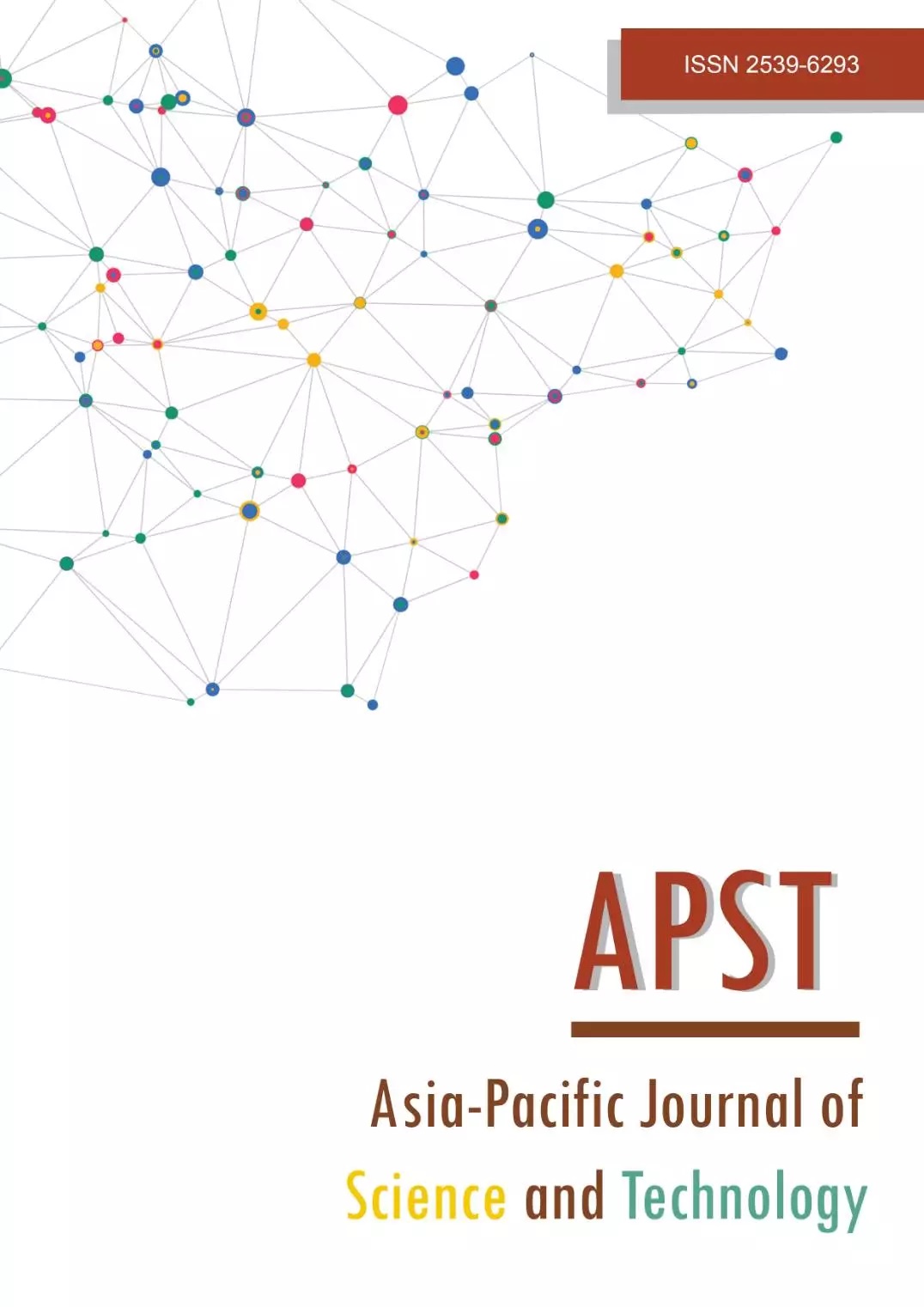The logistic growth regression model with the genetic algorithm for predicting the third wave of the COVID-19 epidemic in Thailand
Main Article Content
Abstract
The world is currently facing the novel coronavirus 2019 (COVID-19). Thailand, with a high basic reproduction number (2.27), the situation remains serious as the disease spreads throughout the country. Applying various control measures to contain the outbreak has increased the need for policymakers to assess the scale of the epidemic. In this study, a logistic growth regression (LGR) model is implemented to characterize the trends and estimate the final size of the third wave of the epidemic in Thailand at both the provincial and national levels. The parameters of the LGR are fine-tuned through the genetic algorithm assisted by the Gauss-Newton algorithm (GA/GNA). The outbreak data from the previous two waves of infection is used to validate the model performance. As a result, the LGR-GA/GNA model provides goodness-of-fit with a low RMSE, high R2, and highly significant parameters. Furthermore, when compared to the LGR model parameterized by particle swarm optimization and ant colony optimization, the proposed model outperforms the rest. In addition, to verify the prediction performance by comparing with the Susceptible-Infectious-Recovered (SIR) model, the proposed model improves the prediction accuracy better than the other. As the work was completed on May 6, 2021, the study found a possible increasing trend of COVID-19 for some vulnerable provinces and the whole country and an estimated final and peak size of the epidemic and their occurrences. The study concluded that the epidemic size of the third wave of COVID-19 in Thailand was about 190,000 by mid-July 2021.
Article Details

This work is licensed under a Creative Commons Attribution-NonCommercial-NoDerivatives 4.0 International License.
References
Marioli AF, Bullano F, Kucinskas S, Moreno RC. Tracking of COVID-19: a new real-time estimation using the Kalman filter. PLoS ONE. 2021;16(1):1-16.
Tantrakarnapa K, Bhophornangkul B. Challenging the spread of COVID-19 in Thailand. One Health. 2020;1:1-10.
Mahikul W, Chotsiri P, Ploddi K, Pan-ngum W. Evaluating the impact of intervention strategies on the first wave and predicting the second wave of COVID-19 in Thailand: a mathematical modeling study. Biol. 2021;10(2):1-12.
Zhang L, Huang J, Yu H, Liu X, Wei Y, Lian X, et al. Optimal parameterization of COVID-19 epidemic models. AOSL. 2021;14(4):1-23.
Moein S, Nickaeen N, Roointan A, Borhani N, Heidary Z, Javanmard SH, et al. Inefficiency of SIR models in forecasting COVID 19 epidemic: a case study of Isfahan. Sci Rep. 2021;11(4725):1-9.
Chu J. A statistical analysis of the novel coronavirus (COVID-19) in Italy and Spain. PLoS ONE. 2021; 16(3):1-36.
Yang Z, Zeng Z, Wang K, Wong SS, Liang W, Zanin M, et al. Modified SEIR and AI prediction of the epidemics trend of COVID-19 in China under public health interventions. J Thorac Dis. 2020;12(3):165-174.
Sen D, Sen D. Use of a modified SIRD model to analyze COVID-19 data. Ind Eng Chem Res. 2021;60(11):4251-60.
Rath S, Tripathy A, Tripathy AR. Prediction of new active cases of coronavirus disease (COVID-19) pandemic using multiple linear regression model. Diabetes Metab Syndr. 2020;14(5):1467-1474.
Girardi P, Greco L, Mameli V, Musio M, Racugno W, Ruli E, et al. Robust inference for non-linear regression models from the Tsallis score: application to coronavirus disease 2019 contagion in Italy. Stat. 2020;9(1):1-9.
Yang Q, Wang J, Ma H, Wang X. Research on COVID-19 based on ARIMA modelΔ-Taking Hubei, China as an example to see the epidemic in Italy. J Infect Public Health. 2020;13(10):1415-1418.
Wieczorek M, Siłka J, Połap D, Woźniak M, Damaševičius R. Real-time neural network based predictor for cov19 virus spread. PLoS ONE. 2020;15(12):1-18.
Wongsathan R. Real-time prediction of the COVID-19 epidemic in Thailand using simple model-free method and time series regression model. Walailak J Sci & Tech. 2021;18(14):1-11.
Naudé W. Artificial intelligence vs COVID-19: limitations, constraints and pitfalls. AI Soc. 2020;35(3):761-765.
Shen CY. Logistic growth modeling of COVID-19 proliferation in China and its international implication. Int J Infectious Disease. 2020;96:582-589.
Ahmadi A, Fadai Y, Shirani M, Rahmani F. Modeling and forecasting trend of covid-19 epidemic in Iran until May13, 2020. Med J Islam Repub Iran. 2020;34(1):183-195.
Gutiérrez CRA, Colorado D, Bautista HSL. Comparison of an artificial neural network and Gompertz model for predicting the dynamics of deaths from COVID-19 in México. Nonlinear Dyn. 2021;104(4):4655-4669.
Zhan C, Zheng Y, Lai Z, Hao T, Li B. Identifying epidemic spreading dynamics of COVID-19 by pseudocoevolutionary simulated annealing optimizers. Neural Comput Appl. 2021;33(10):4915-4928.
Paggi M. An analysis of the Italian lockdown in retrospective using particle swarm optimization in machine learning applied to an epidemiological model. Physics. 2020;2(3):368-382.
He S, Peng Y, Sun K. SEIR modeling of the COVID-19 and its dynamics. Nonlinear Dyn. 2020;101(3):
-1680.
Viboud C, Simonsen L, Chowell G. A generalized growth model to characterize the early ascending phase of infectious disease outbreaks. Epidemics. 2016;15:27-37.
Roseline OO, Adewale FL, Golam BMK, Joseph BA, Benedita BA. Predictive modelling of COVID-19 confirmed cases in Nigeria. Infect Dis Model. 2020;5:543-548.


